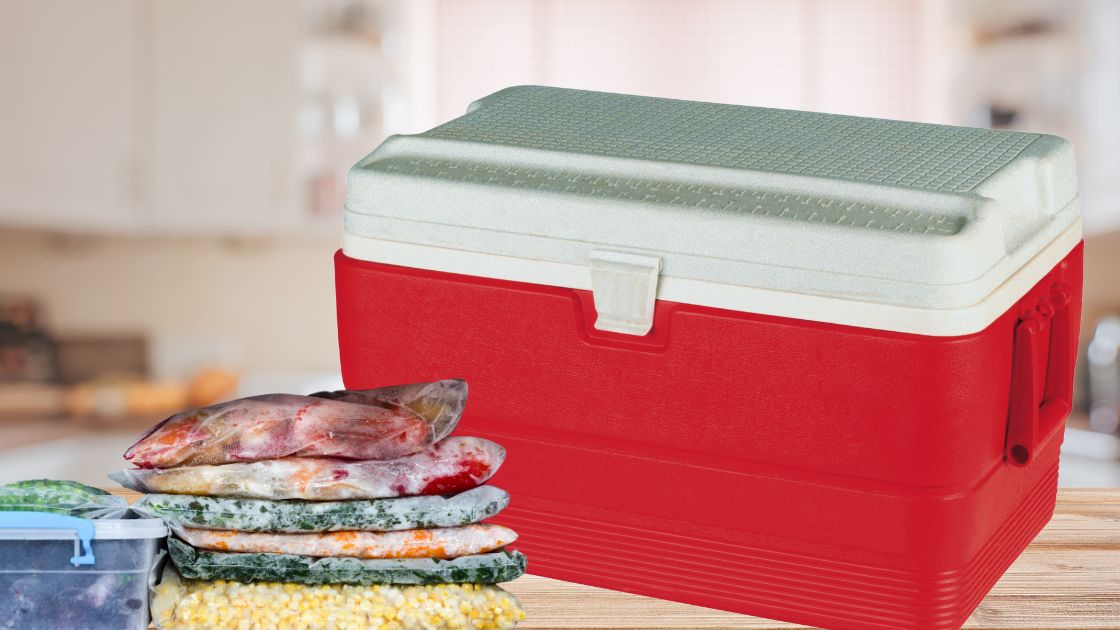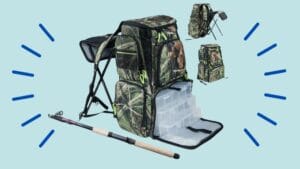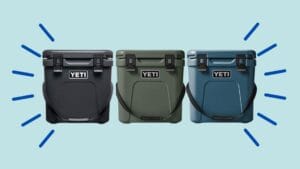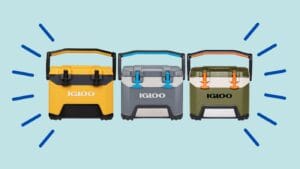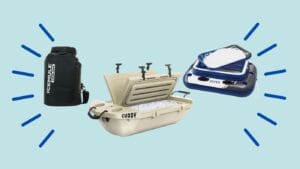How to Keep Frozen Food in a Cooler? Do you remember the joy and anticipation of a road trip, packing up the car with snacks and drinks, heading out on an adventure? I sure do. But one thing that always seemed to cause stress and worry was how to keep our frozen food from thawing during the journey.
There’s nothing worse than opening your cooler to find melted ice, soggy food, and a ruined meal. But fear not! With these seven essential tips, you can keep your frozen food in a cooler and enjoy delicious, fresh meals wherever your travels take you.
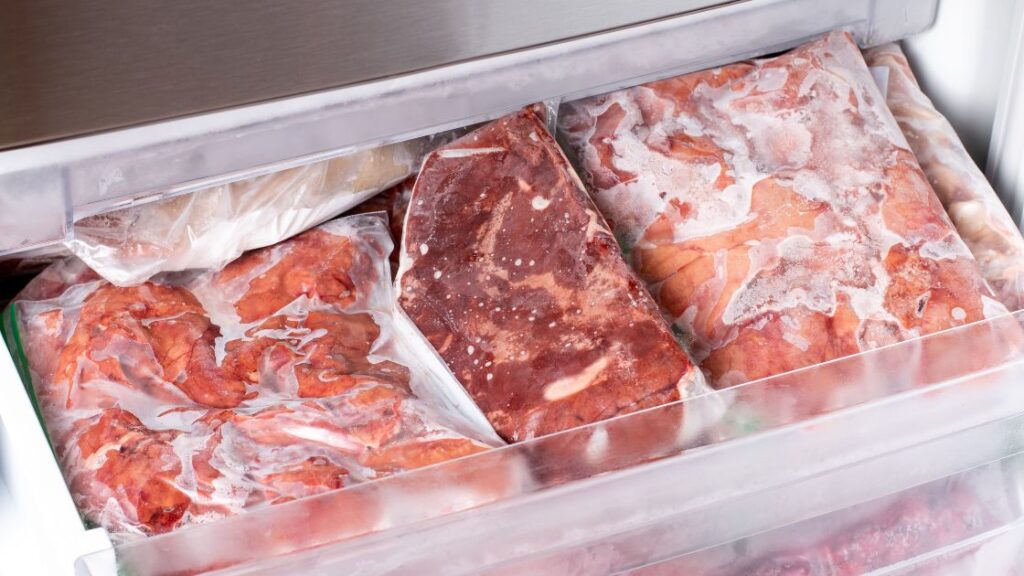
How to Keep Frozen Food in a Cooler – Key Takeaways:
- Pre-freeze your food before packing it in the cooler to ensure it reaches its lowest temperature.
- Invest in a high-quality cooler with good insulation to maintain a low temperature for an extended period of time.
- Pack your cooler properly, placing pre-frozen food at the bottom and surrounding it with ice packs or ice.
- Seal your food in airtight containers or plastic bags to prevent leakage and contamination.
- Consider using aluminum foil to wrap your food, as it provides insulation and helps prevent freezer burn.
Preparing the Food for Travel
How to Keep Frozen Food in a Cooler for a travel? Before embarking on your road trip, it’s important to properly prepare the food that you’ll be taking with you. This ensures that your meals stay deliciously frozen throughout the journey. One essential step in this process is pre-freezing the food in your home freezer for a minimum of 24-48 hours. By doing so, you’ll ensure that the food reaches its lowest temperature, giving it a head start in staying frozen for longer.
Pre-freezing the food is especially crucial if you’ll be traveling for an extended period of time or if the temperatures are expected to be high. This method helps the food retain its frozen state, allowing you to enjoy it at your leisure during the trip.
Here are the steps to pre-freeze food for your road trip:
- Gather your food items: Select the meals or ingredients you plan to take on your trip and ensure they are suitable for freezing.
- Package the food: Divide your food into individual portions and place them in airtight containers or sealable plastic bags. This not only prevents freezer burn but also helps with organization and easier access during the trip.
- Label and date: Don’t forget to label each package with the type of food and the date it was frozen. This will make it easier to manage your supplies and ensure you consume the oldest items first.
- Place in the freezer: Put the packaged food in the coldest part of your home freezer and allow it to freeze solidly for at least 24-48 hours.
By pre-freezing your food, you’ll have peace of mind knowing that it is properly preserved and ready for your road trip. This method is especially helpful if you’ll be traveling to remote areas where fresh food options may be limited. Now that your food is ready, it’s time to choose the perfect cooler to keep it frozen and fresh throughout your journey.
Preparing frozen food for travel
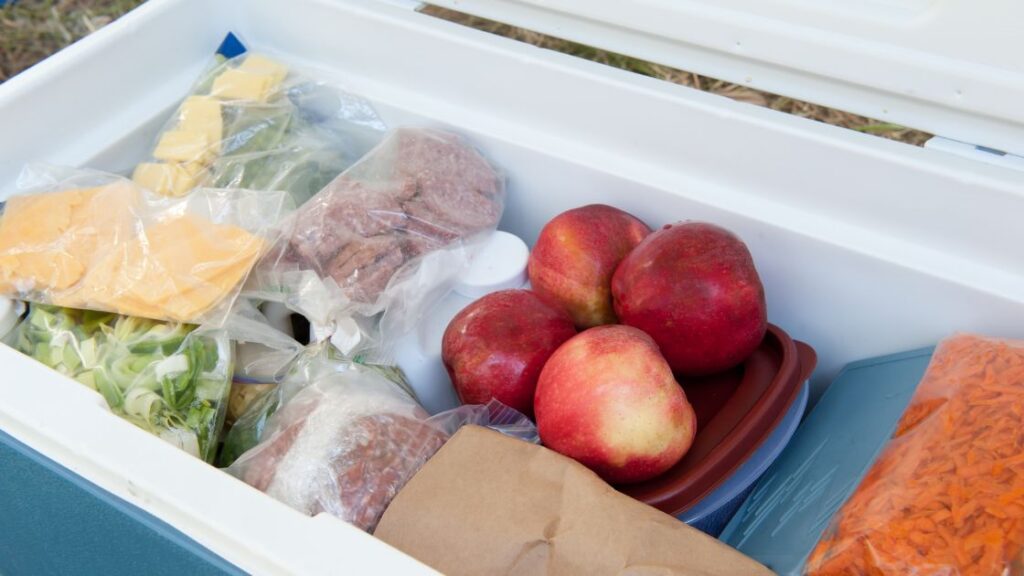
| Benefits of Pre-Freezing Food for Travel | Tips for Successful Pre-Freezing |
|---|---|
|
|
Choosing the Right Cooler
The quality of your cooler greatly affects how well your food stays frozen. To ensure your frozen food remains perfectly preserved, it’s essential to invest in a high-quality cooler specifically designed for this purpose.
When selecting a cooler, look for the following key features:
- Thick Insulation Walls: Opt for a cooler that has thick insulation walls to provide maximum thermal efficiency. This will help maintain a consistently low temperature inside the cooler and prevent the food from thawing.
- Tight Seal: A cooler with a tight seal is crucial for preventing warm air from entering and cold air from escaping. This will help create an insulated environment and prolong the frozen state of your food.
- Durable Construction: Choose a cooler that is built to withstand rough handling and outdoor conditions. Look for coolers made from sturdy materials such as rotomolded plastic or stainless steel.
One popular option to consider is the Yeti Tundra 65 Cooler. It is known for its exceptional insulation properties and durable construction, making it an excellent choice for preserving frozen food during travel.
Additionally, if you anticipate extended travel or longer durations where your food needs to stay frozen, you may want to consider using an insulated cooler specifically designed for frozen food. These coolers are designed with reinforced insulation and advanced cooling technologies to maintain a freezing temperature for an extended period.
Insulated Cooler for Frozen Food: A Comparison
| Cooler | Insulation Thickness (inches) | Capacity (quarts) | Price |
|---|---|---|---|
| Engel Coolers High-Performance Roto-Molded Cooler | 2.5 | 65 | $259.99 |
| RTIC Insulated Cooler | 3 | 45 | $179.99 |
| Pelican Elite Cooler | 2 | 50 | $299.95 |
Remember, investing in a high-quality cooler designed for preserving frozen food is essential for maintaining the freshness and quality of your food during travel. By choosing the right cooler, you can ensure that your frozen food stays frozen and ready to enjoy.
Proper Packing Techniques
When it comes to keeping frozen food in a cooler, proper packing is essential. By following these cooler packing tips for frozen food, you can prevent freezer burn and ensure your food stays frozen and fresh throughout your journey.
1. Placement Matters
Start by placing your pre-frozen food at the bottom of the cooler. This helps to create a solid base and prevents the food from coming into direct contact with any potentially warmer air that might be circulating in the cooler. It’s also a good idea to separate different types of frozen food items with a layer of ice packs or ice to maintain an even temperature.
2. Airtight is Key
To prevent any leakage or contamination, it’s important to seal your frozen food in airtight containers or plastic bags. This not only helps to maintain the temperature inside the cooler but also ensures that any melting ice doesn’t come into contact with your food. If you’re using smaller plastic bags, make sure to squeeze out as much air as possible before sealing to minimize the risk of freezer burn.
3. Wrap it Up
Consider using aluminum foil to wrap individual portions or batches of frozen food. The foil acts as an additional layer of insulation and helps to prevent freezer burn by reducing the amount of air exposure. Make sure to tightly wrap the foil around the food to create a seal.
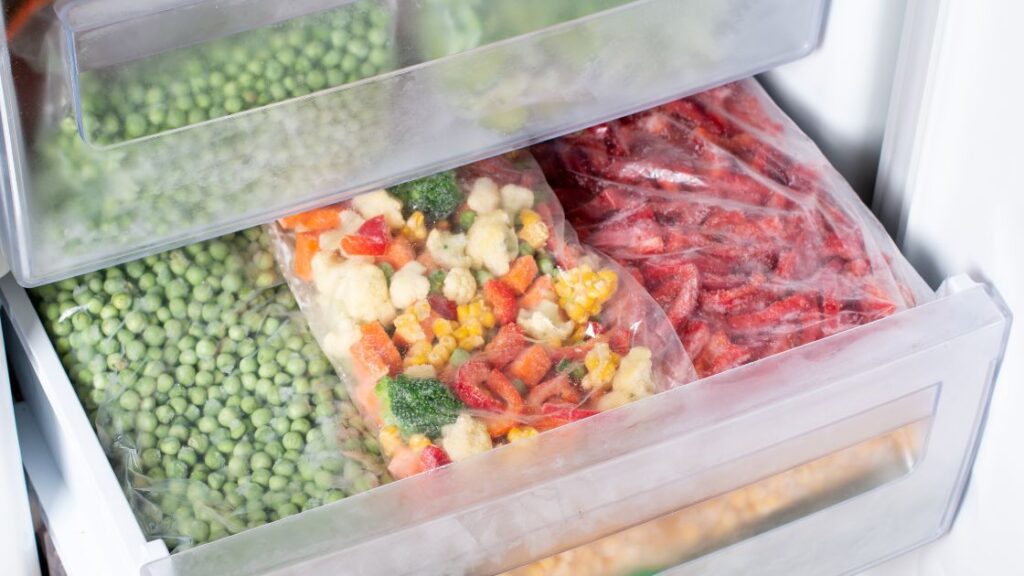
4. Layer Wisely
When packing your cooler, it’s a good idea to follow a layering technique. Start with a layer of ice packs or ice at the bottom, followed by a layer of pre-frozen food. Repeat this process until the cooler is full, making sure to end with a layer of ice packs or ice on top. This layering technique helps to keep the frozen food insulated and maintain a low temperature throughout the cooler.
By following these cooler packing tips for frozen food and preventing freezer burn in a cooler, you can ensure that your frozen food stays perfectly preserved during your journey. Now that you have a solid understanding of the proper packing techniques, let’s move on to additional tips and tricks for keeping your food frozen while camping or for long-term frozen food storage in a cooler.
Additional Tips and Tricks
When it comes to keeping food frozen while camping or on a long trip, there are a few extra strategies that can help ensure your food stays fresh and ice-cold throughout your adventure.
One helpful tip is to pre-chill your cooler by placing it in a deep freezer the day before your trip. This simple step can significantly improve the cooler’s ability to maintain a consistent low temperature, keeping your frozen food safely frozen for a longer period of time.
For longer trips where you need to keep food frozen for several days, consider using dry ice. Dry ice is extremely cold and can help maintain a frozen temperature in your cooler for an extended period. Just be sure to follow proper handling and safety precautions when using dry ice.
Another crucial tip is to keep the cooler closed as much as possible. Every time you open the cooler, warm air enters, which can lead to faster thawing and increased risk of freezer burn. Minimize opening and closing the cooler by using separate coolers for frozen food and perishable items. This way, you can access the perishable items without affecting the frozen food as frequently.
FAQ
How long can frozen food stay in a cooler?
The length of time frozen food can stay in a cooler depends on several factors, including the quality of your cooler, the temperature outside, and how well the cooler is packed. A well-insulated cooler can keep food frozen for up to 24-48 hours, especially if you use ice packs or dry ice to maintain a low temperature.
Can I use regular ice to keep my frozen food cold?
Yes, regular ice can be used to keep your frozen food cold in a cooler. However, it’s important to use it in combination with pre-frozen food and ice packs to maintain a consistent temperature. Regular ice tends to melt quickly, which can lead to water leakage and potential contamination of your frozen food.
How do I prevent freezer burn in a cooler?
Freezer burn can occur when food is exposed to cold, dry air. To prevent freezer burn in a cooler, make sure your food is properly sealed in airtight containers or plastic bags. Wrapping the food in aluminum foil can also provide insulation and protect it from air exposure. Additionally, avoid opening the cooler unnecessarily to maintain a consistent temperature.
Can I use dry ice in my cooler to keep food frozen for longer?
Yes, dry ice is an excellent option for keeping food frozen for extended periods. Unlike regular ice, dry ice does not melt but sublimates directly from a solid to a gas. This means it can maintain a consistently low temperature for several days. However, it’s important to handle dry ice with caution and follow proper safety guidelines.
Should I use separate coolers for frozen food and perishable items?
Yes, using separate coolers for frozen food and perishable items is recommended. This reduces the need for opening and closing the cooler frequently, which helps maintain a consistent temperature for your frozen food. It also helps prevent cross-contamination of food and minimizes the risk of spoilage.

